Begonia maculata is perhaps the most Instagram-worthy plant there is.
Spots never go out of style, and the vibrant Polka Dot Begonia is the botanical fashion icon we all need in our homes.
With maculata meaning “spotted” in Italian, and of course, Begonia meaning an esteemed member of the Begoniaceae family – this plant sounds like it’s fresh off a runway in Milan.
Don’t let its fancy leaves fool you, though; it’s not a difficult plant to care for.
Perfect in the home and in the terrarium alike, Begonia maculata is an easy-going plant and a brilliant grower (honestly, just try and stop her).
With a little knowhow, it’s straightforward to keep her happy, and she’ll keep you happy in return!
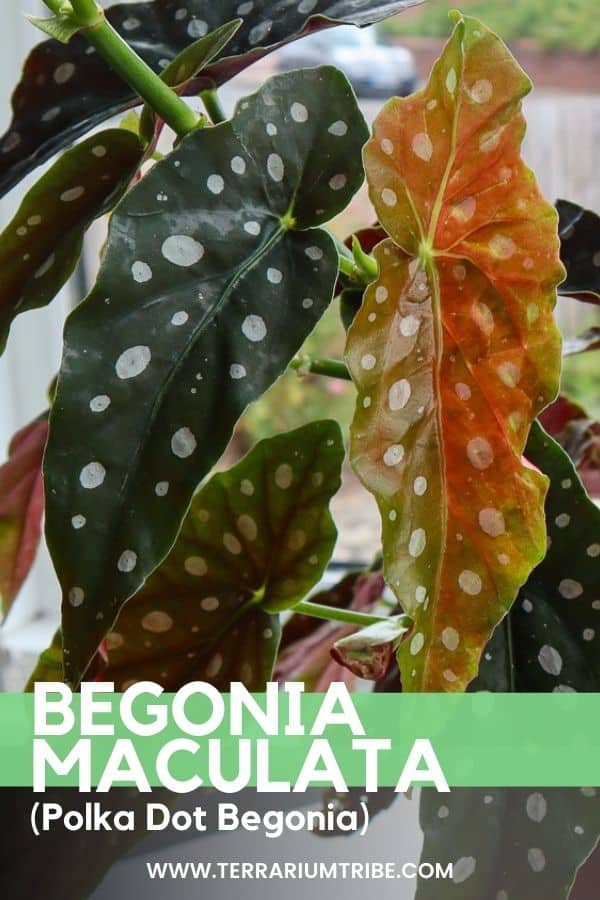
What is the Polka Dot Begonia? (& How is it so Fabulous?)
The Begonia maculata is a type of Cane Begonia (or Angel Wing Begonia) which are known for their bamboo-like stems and angelic leaf shapes.
And wow, are its leaves striking.
On the front, it has big deep green leaves adorned in silver, sparkly spots.
And on the back, this plant flaunts the most amazing crimson undersides and is rumored to have been the inspiration for Christian Louboutin’s classic red-bottomed heels!
It’s party in the front and party in the back with this one.
And the fun doesn’t stop there, the maculata is a flowering plant that blooms the most stunning white flowers with dainty little yellow centers in the warmer months.
What more could you want?
Where to Find Begonia maculata for Sale
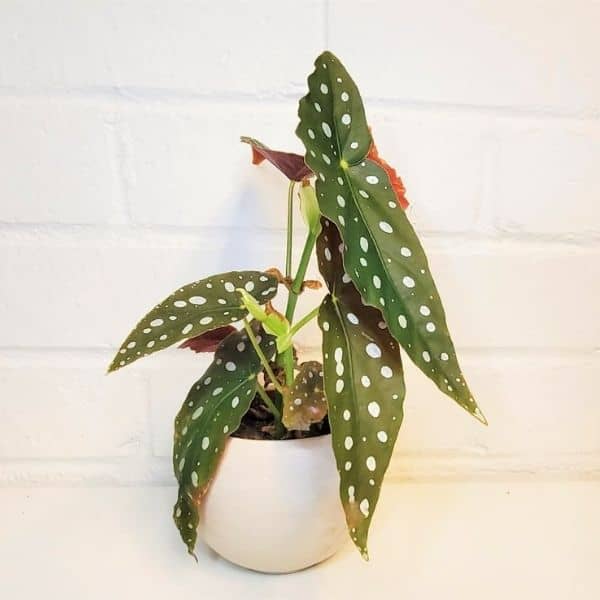
See the links below to purchase from reputable terrarium plant shops and marketplaces (may include affiliate links).
Begonia maculata Care & Growth
At a Glance
| Plant Type | Foliage |
| Lighting | Medium- Bright Indirect light |
| Temperature | 55-86°F 12-30°C |
| Watering | Evenly moist soil |
| Humidity | High humidity 60-100% |
| Growth | Up to 4ft with support |
Lighting
So, the first thing you need to know about this plant is that it really can’t tolerate direct sunlight.
Native to the Brazilian rainforests, this darling would be situated on the forest floor and so only receive heavily filtered light from beneath the canopy.
Meaning that, unlike vines that head up the trees towards the Sun, the maculata isn’t forgiving when it comes to lighting, and any direct light can scorch the delicate leaves and leave you with unsightly brown spots.
I had a couple of casualties after having it sat on the windowsill during (a particularly sunny) spring. Whoops.
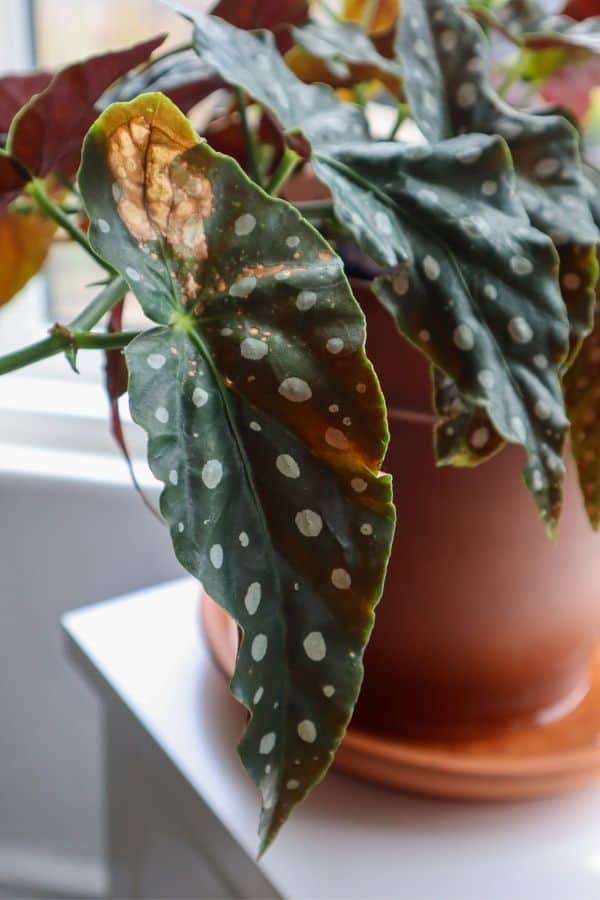
So, indirect bright light is best, but I wouldn’t worry about getting it extremely bright.
It can tolerate light situations on the lower end of the scale as long as it’s not really dim light (the red pigment in the leaf undersides reportedly helps maximize photosynthesis).
I’d stick with a north-facing window if you have one kicking about. Otherwise, make sure it’s several feet away from the window where it won’t be singed.
Mine is now 7ft (ish) away from a southeast-facing window where it gets completely indirect sunlight and is very happy.
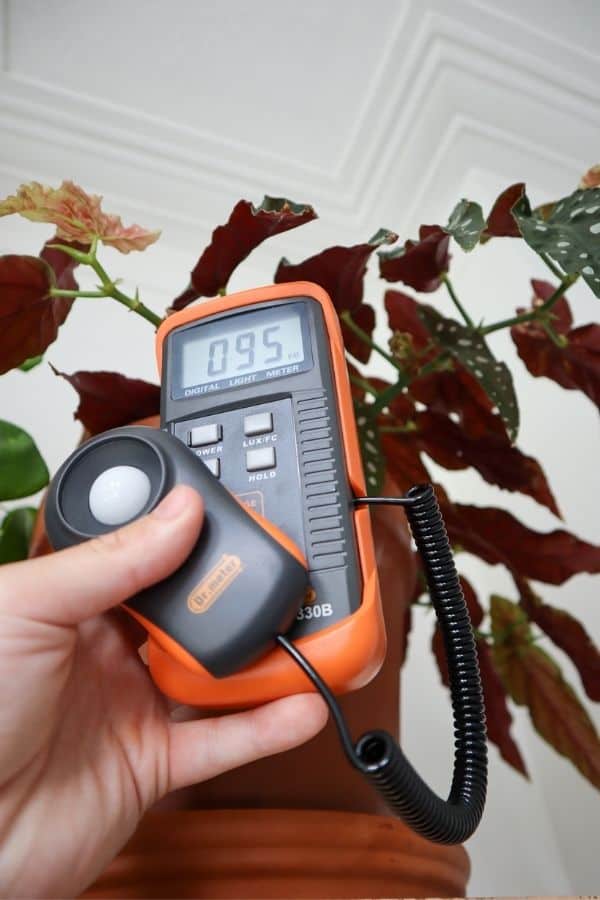
Watering
Regular watering will keep your maculata looking lovely and vibrant.
This plant likes lots of even, consistent moisture.
Aim to maintain moist soil by letting it dry out just a little bit between waterings and top up when it feels a little dry to the touch.
I’d always make sure she’s in a pot with drainage to ensure you won’t have any issues with excess water. It’ll just make your life a lot easier, and you can water more freely without worrying about overdoing it.
But, with that being said, I had mine in a pot without drainage for around a year and it grew a tonne, just be a bit more careful with your watering method to make sure she’s not sat in soggy soil.
Either extreme could end in a trip to the plant ER:
- Underwatering. If it’s left too dry for too long, you’d expect to see browning, ultimately leading to leaf loss. Get your gal a drink of water pronto.
- Overwatering. Too much water can cause root rot – the most typical indicator of this being brownish-yellow leaves (again potentially resulting in your plant dropping leaves).
If you don’t quite get the balance right, fear not, she’s a tough old gal. And in my experience, she really has the capacity to bounce back.
Being on top of my wardrobe means that I need to get the ladder out to water her, so she doesn’t quite get the diligent watering and care that my other plants get – despite really needing it. Oops.
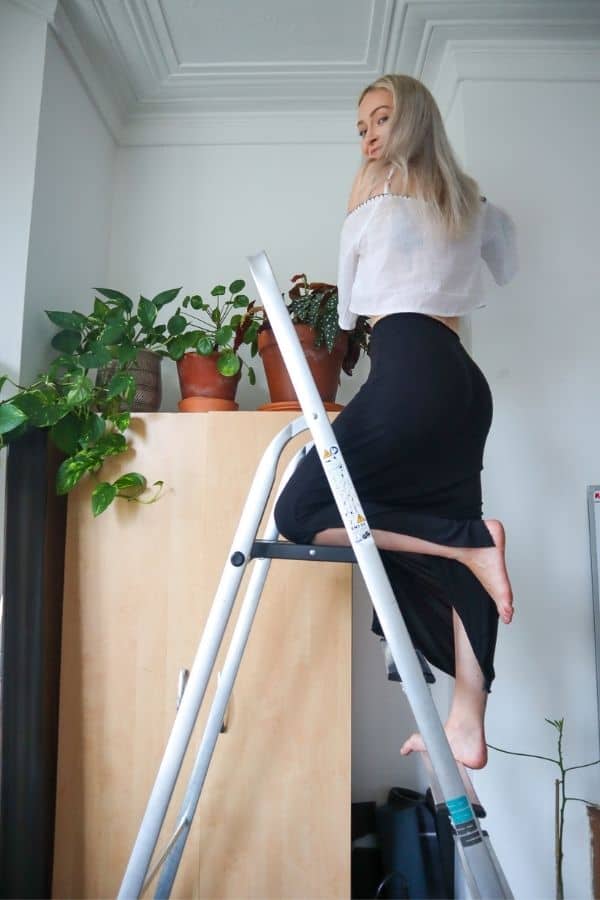
In a closed terrarium, you won’t be able to let the substrate dry out, so try to find a water balance with minimal moisture in the system.
Aim for a lightly moist substrate, and try to open up the terrarium every now and again to get some airflow in there.
Substrate
The thing you’ll really need to aim for with your substrate is the ability to both drain well and retain moisture.
I absolutely love coco coir as a base – and it fits the bill perfectly.
You’ll want it to be a pretty light and airy mix, so you can add in some orchid bark plus pumice or vermiculite to improve aeration and maximize water retention.
For such a rapid grower, I’d throw in some earthworm castings as a natural fertilizer, too, for good measure.
In all honesty, I have my plant in a standard chunky tropical mix, and it’s doing more than fine. The Polka Dot Begonia ain’t no picky eater.
Finally, sphagnum moss can be a good addition to the mix – especially for terrarium mixes – as a way to keep the mix fresh and moist.
Temperature & Humidity
Anything in the 55-86°F 12-30°C range should be fine for your Polka Dot Plant.
Though I’d err on the warmer side where possible – this tropical plant won’t thank you for cold temperatures.
The Royal Horticultural Society (RHS) says that 66°F (19°C) is the optimum for this plant, so I’d aim for that, but its native environment can be much higher, so I’d say you have a nice bit of wiggle room with this one.
Our office is typically in the 72-80°F (22-27°C) region, and it grows great.
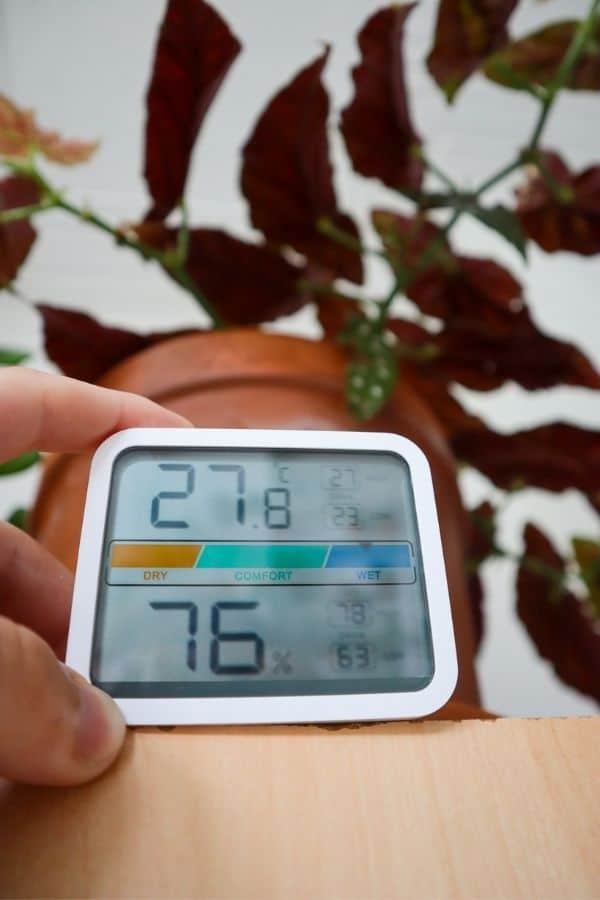
Humidity levels, you ask? As much as physically possible.
Anything over 60% should be good, but anything under 50% you risk crispy dry leaf tips.
Your maculata would adore anything close to a 100% humid environment if possible.
Naturally, this makes the “put it in a terrarium” bell ring in my brain. A Begonia terrarium? Sure, it’s a match made in heaven.
If you don’t fancy popping your polka dot queen in a glass palace, you can boost your humidity by adding a humidifier (or leaving full watering cans around the room as I do).
Growth
Honestly, the Begonia maculata is an amazing grower.
In the mere 14 months of having mine, it’s gone from a single leaf to, well… a massive pot of polkadot magic.
They can grow up to 10 feet tall in the wild and can even reach a good 4 feet in the home.
What you see is what you get with this beautiful Begonia and there’s little difference when you compare juvenile and mature plants. Literally just size.
But hey, size matters, and more Begonia is better, right?
It’s a plant that grows up/out in whatever direction it damn well pleases, so if you want your plant to look a certain way, I’d recommend grabbing a couple of bamboo canes and tying the stems to it.
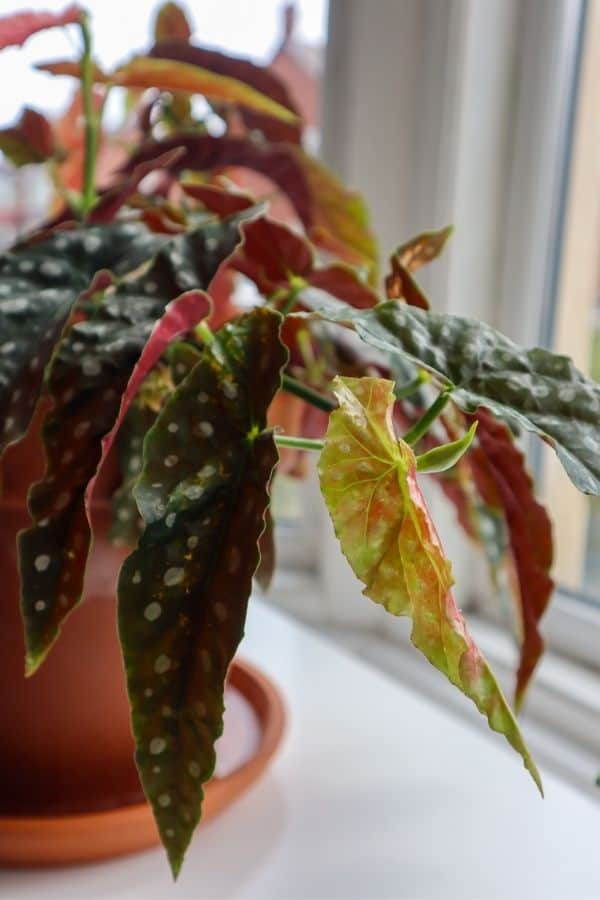
If you’re planning on leaving it to its own devices like I have, it’s a plant you’ll need to remember to turn. It pops out the majority of new leaves on the side facing the light source, so it can easily get a bit lopsided if left in one direction too long.
Keep your plant happy and you may be rewarded with beautiful flowers that bloom in the spring and summertime! (Ours hasn’t… but as I’ve mentioned, there have been a couple of Begonia maculata care oopsies in our household.)
And it’s quite a seasonal grower, too, so don’t worry if the growth slows a little in the winter. You can expect much faster growth in the warmer months.
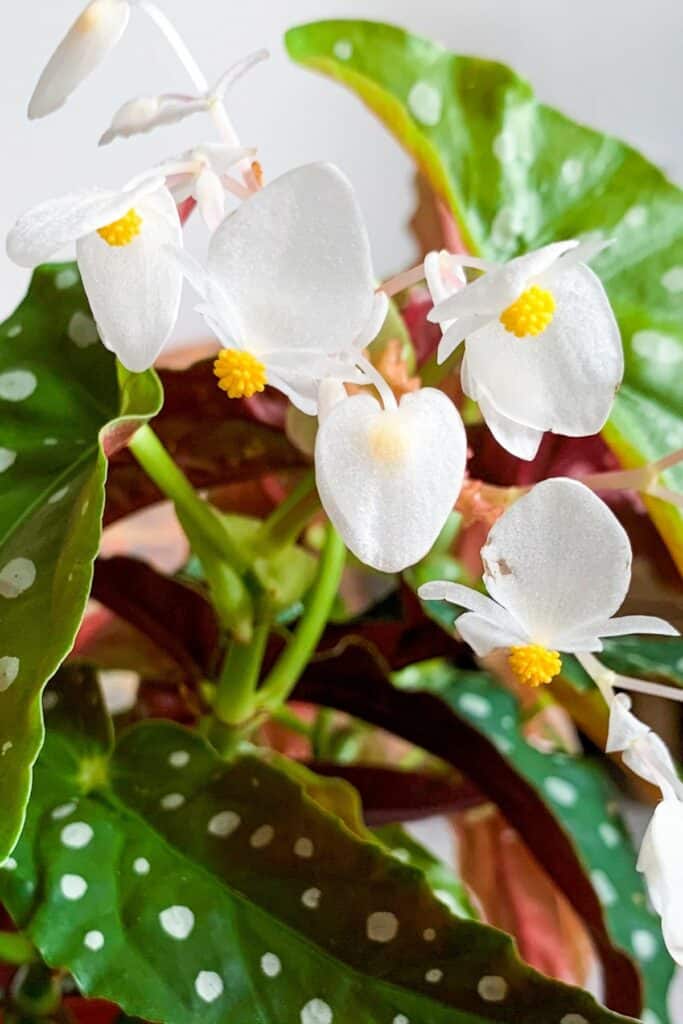
Also, trimming is well-received and will help promote bushier growth for a fuller-looking plant. If you’re putting her in a terrarium, unless you have a massive container, you’ll need to prune her regularly to stop her from getting out of hand.
Propagation
Begonia maculata are easily propagated by the good old-fashioned stem-cutting process.
Snip beneath the root node (secateurs are best as the stems are quite thick) and stick your cutting in a jar of water.
Then, all you’ll need is patience.
This plant takes significantly longer to develop roots than I’m used to with the likes of Epipremnum and Philodendron and other similar aroids.
Nothing happened for a while, and then BOOM. Little white roots came spilling out of the node. Keep the faith!
We’re probably talking 6 weeks or more to get some decent roots going.
You can propagate your cutting in soil, too (with rooting hormone), but water works great, and I really like watching the process unfold.
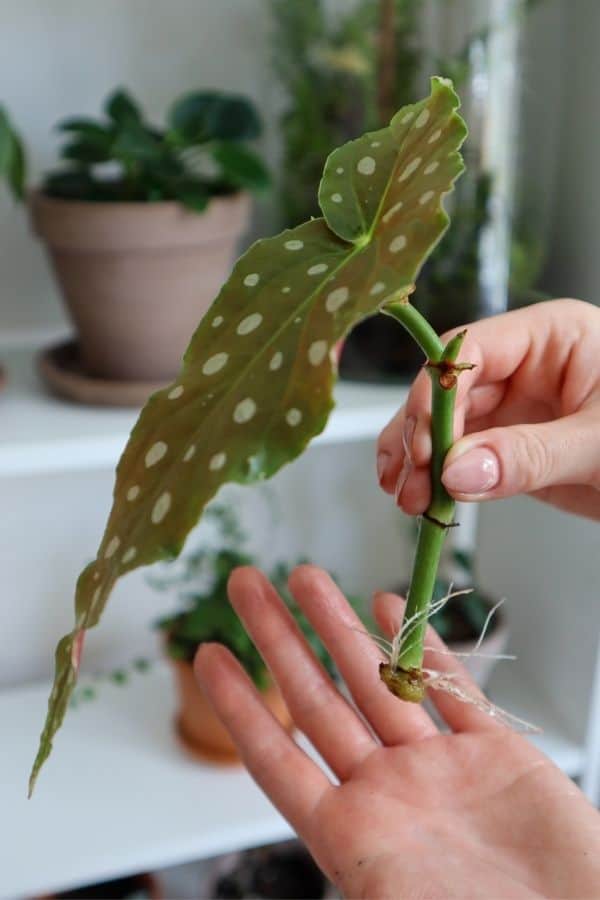
Varieties & Similar Plants
There are thousands and thousands of types of Begonia, so it’s fair to say there’s a Begonia for everyone!
Much to my delight, for some reason, many of them have hilarious larger-than-life names (my personal favorite being the Begonia ‘Lady Vanderwilt’, which sounds like a Downton Abbey protagonist).
They’re even quite the collector’s item in some circles. While researching this, I even found some extremely cute Begonia enthusiast magazines from the 1970s to the early 2000s.
So, I’ll keep my recommendations short and sweet and stick to varieties in the same category as the Begonia maculata.
And even then, there are countless Angel Wings!
So, here are three of my Cane/ Angel Wing Begonia top picks if you’re looking for something a little different but somewhat similar to the maculata:
- Begonia ‘Benigo Pink’
- Begonia ‘Sophie Cecile’
- Begonia ‘Corallina’
We also have plant profiles on the Fuchsia Begonia and the Fern leaf Begonia if you want to check those out!
Frequently Asked Questions
No, the Begonia maculata is relatively common and easy to source. Don’t be fooled by plant shops plastering the word “rare” onto it to justify an outrageous price tag! We’ve even spotted them at our local garden center before.
Yes – all parts of the Begonia maculata are toxic to pets, but especially the roots/tubers, which are highly poisonous. So, if you have little paws around your home, we recommend popping them in a terrarium (as if you needed an excuse, right?). Thankfully, though, Begonias aren’t considered toxic to people.
I went on a Reddit deep dive to get to the bottom of this one! They’re sold interchangeably, but they are technically different varieties. My understanding is that Begonia maculata is a species complex (meaning that there are many variations), and Begonia maculata “wightii” is one of those variations from back in the 1930s. But, no one really knows the lineage as it’s so old there’s so little documentation, and no one really knows just what the difference between them is in terms of characteristics.
Begonia maculata dropping older leaves can be normal – especially if the plant is pumping out lots of fresh growth; it’s nothing to worry about. But pair it with browning or yellowing, and you’re probably looking at an overwatering or under-watering situation.
If your Begonia maculata is not flowering, it could be down to any number of things, but the chances are that you’re not meeting one or more of its key care requirements. Pay attention to humidity, temperature, etc. Check the light situation, does the soil feel soggy or dry to the touch?
Yellowing leaves are likely an issue with watering. If your Begonia maculata is consistently sat in wet soil you can risk root rot. Make sure you let it dry out a little and have a pot with drainage – you might be giving it too much love.
Browning leaves are a sign of many things in a Polka Dot Begonia. Check you’re not over or under-watering, and make sure the humidity is high. Also, avoid direct light at all costs!
